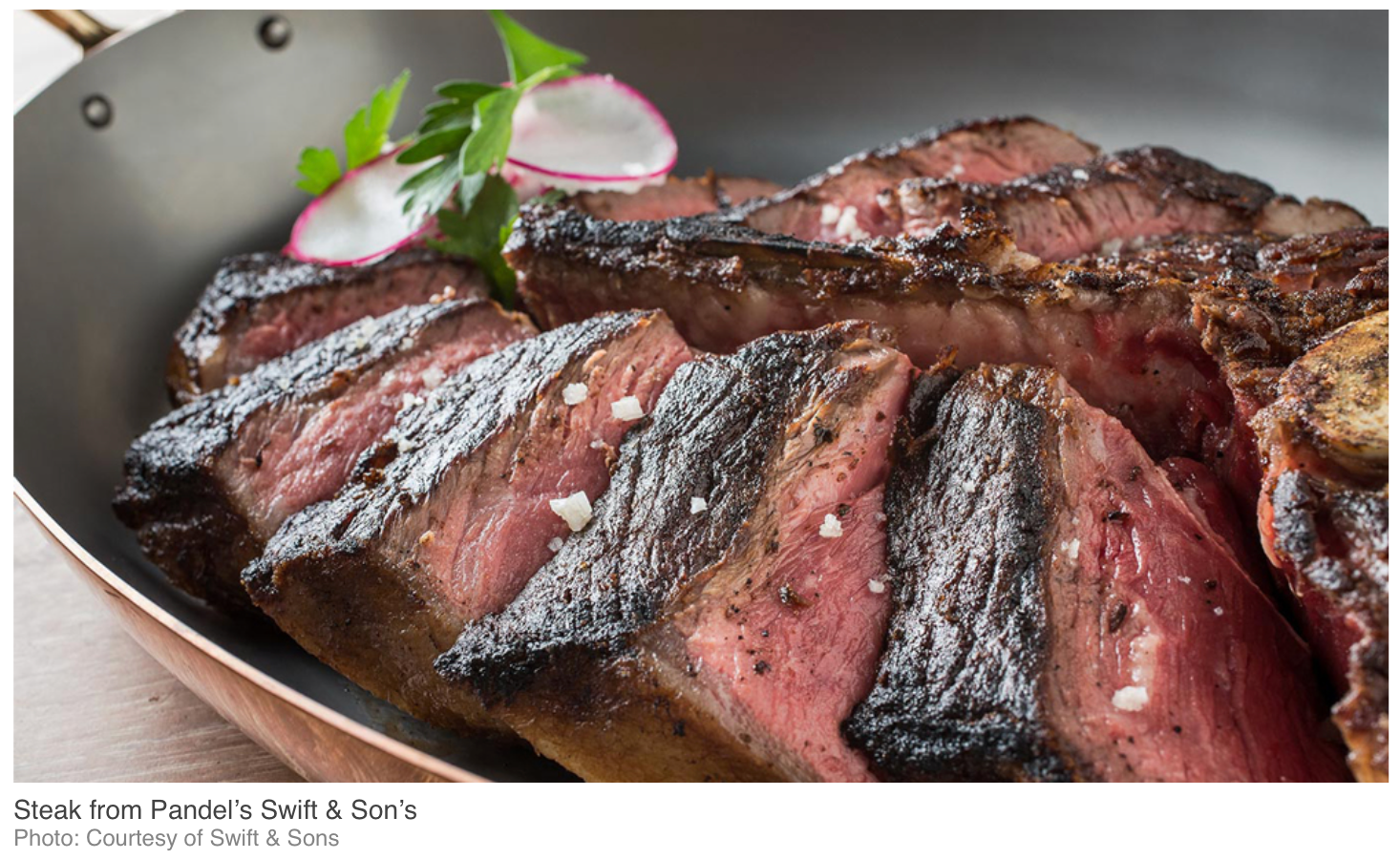Everything You Need to Know About Dry-Aged Steak
A little age never hurt anyone—unless we’re talking about our increasingly creaky knees and ever-more foggy memory, or sorer-by-the-day lower backs. Okay, scratch that. For us mortals, age hurts, period. But when it comes to such culinary delights as wine, cheese, and red meat, age has the power to enhance flavor and deepen our enjoyment.
This is especially the case for dry-aged beef, which is known for a richer flavor and more tender texture—as well as a heftier price tag—than its fresh-cut counterparts. But what is it about dry-aging that works such magic on meat?
Even if you appreciate what a dry-aged steak does for your tastebuds, the nuances about how it delivers such a transcendent experience may escape you. That’s why, with the help of food scientists and chefs, we’re unpacking exactly what dry-aged beef is and how dry-aging works.
What is dry aging?
“An unsexy way to explain it is that dry-aging, in a nutshell, is a controlled decay process,” says Katie Flannery, butcher and COO at Flannery Beef. “You’re exposing the subprimals to oxygen, which allows natural enzymes within the meat work,” she says. “They’re aerobic bacteria, so they need oxygen to survive. They come alive and start breaking down the molecular bonds of meat.” This, in turn, alters the flavor and texture of the cut.
What dry aging looks like is literally a room full of moldy carcasses. In the dry-aging process, meat hangs in a humidity-controlled environment in a way that exposes all of its sides with unimpeded airflow around the entire cut. “Then there’s the good mold that finds its way onto steaks, which will slowly start to break down and increase the amount of evaporation,” says Chris Pandel, executive chef at Swift and Sons in Chicago. “You’re puling moisture from the meats over time. As that happens the mold will extend its life and grow. It’s like the mold on blue cheese—it’s good mold not bad mold.”
Of course, before that slab of beef makes it to your plate, all of the mold will be trimmed away, leaving just “tenderized, funky, delicious meat,” Pandel says. He describes the flavor of dry-aged meat as having a nuttiness to it that you won’t get in a wet-aged steak. Likewise, it’ll be more tender and have a different mouthfeel.
How does dry-aging change the taste and texture of meat?
Moisture loss is one aspect that changes the flavor of dry-aged meat. “What that does is essentially concentrate the remainder of the tissue,” says Harold McGee, food scientist and author of Keys to Good Cooking: A Guide to Making the Best of Foods and Recipes. “Meat is about 75 percent water. If you lose a few percent to evaporation … what’s left will be more concentrated, so the flavor will be more concentrated.”
For those who know their way around a kitchen, Flannery likens the process to reducing a stock to a demi-glace. “You have that pot on your stovetop. As more and more moisture evaporates, the flavor of the liquid is getting more and more concentrated. With beef, as water evaporates, the natural beef flavor intensifies,” she says.
But chemical changes also affect the flavor. “During the aging period, some of the flavor compounds and other molecules in the meat undergo chemical change that will increase some flavor components while reducing others,” says Joe Regenstein, Professor in the Department of Food Science at Cornell’s College of Agriculture and Life Sciences.
Muscle cells are made of lots of different materials, and chief among them are the proteins that enable the muscles to contract, and the molecules that fuel this process, such as glycogen, DNA and RNA. During dry-aging, these large, flavorless molecules are broken down into smaller, flavorful fragments, explains McGee.
“All of those molecules are relatively large, and when they’re broken down by the enzyme activity, they form fragments that are more flavorful than the original large molecules,” he says. “Some proteins get broken down into amino acids. They can be a little bitter, savory, such as in MSG, and the DNA/RNA material can get broken into other molecules that are savory and enhance the savoriness of MSG. And glycogen broken into sugars which are sweet.”
Dry aging transforms the texture of meat as well. “Meat has a very complex internal structure that can be difficult to bite through. By breaking some of these proteins down, the teeth can now more easily go through the meat,” Regenstein says.
Source: robbreport.com

